- Home
- James A. Michener
The Bridge at Andau Page 10
The Bridge at Andau Read online
Page 10
The tragic story of the other centers of resistance was repeated here, but with many strange overtones. Because the Russians had a special hatred for the Csepel workers who had turned against them, the assault was particularly bitter, and because the Csepel men knew that surrender was impossible, the defense was extremely tough. For example, when the main attack came, one Csepel worker rigged up a high-power hose that sprayed gasoline over tanks, which were then ignited with grenades. Another determined worker had rebuilt an antiaircraft gun captured from the Soviets, and this he used in one spectacular burst of glory, shooting down a low-flying jet which had assumed it had unchallenged control of the skies.
In the brutal fighting young Imre Geiger had a weird experience. He was busy making a fresh supply of gasoline bombs when he stopped to stare at a young man who was working from the same barrel. God, he looked funny, Geiger says. “I thought he was a new kind of Russian soldier who had slipped in with us. You know what he turned out to be? A North Korean. After the Korean war the Chinese communists sent several dozen selected North Korean communists, who had fought against America, here to study in our factories. Every one of them turned against communism and fought on our side.”
Geiger’s next encounter was of a more pathetic kind. On the line where the Csepel men handed out their meager stores of ammunition, Geiger met up with two boys of eighteen who could speak little Hungarian. “They could hardly make themselves understood. But they wanted to talk to me and give me something. They had two letters to their families. They wanted me to mail them if I got out. And what do you suppose those letters were written in? Greek. They said there were several Greek kids in the factories. These were the ones the communists kidnaped from Greece during the civil war there. They were made into good communists and given everything they wanted … the best jobs in Csepel. But when the chance came, they fought against the Russians.”
In its last stages the fight for Csepel became a horrifying contest between unparalleled mechanical power on the one side and bare human determination on the other. The defenders of Csepel tried everything. When the Soviets swarmed onto the island the Csepel men ignited the gasoline plant to fight them off and writhing pillars of fire illuminated the deathly scene. But it was no use. Huge Soviet guns sent volleys ricocheting through gaunt, empty factory buildings. Railroad cars were blasted by low-flying rocket planes, and everywhere the mournful whooomp! whooomp! of red mortars brought destruction. The time came on the eighth day of battle, November 11, when further resistance was simply not possible.
Then, like the last weary defenders of Kilian, the men of Csepel quietly vanished into the vegetable patches, or swam the river, or crept inconspicuously into the crowds. They did not surrender. They lived on to participate in what was to be the bravest act of the revolution, one which would forever prove to the world how completely Soviet Russia had lost control over its men in the heavy industries. I shall discuss their action in Chapter Seven, but for the moment they were defeated, and as they slipped away, young Imre Geiger went with them.
The battle for Budapest was now officially over, but the terror continued. Russian tanks had been superb against revolvers; they were even better when the populace had no arms at all. They paraded their might by roaring through the city and firing at random. After a few days of unchallenged triumph they subsided and foot soldiers took over.
With their arrival shocking stories began to circulate throughout Europe, for the savage troops patrolling Budapest were found to be Mongols from the Central Asian Republics. They behaved like animals, and the murders they piled up were frightening.
Why had they been brought in to terrorize the city? Because the original troops, from Russia proper, had been garrisoned in Hungary, under the terms of the Warsaw Pact, so long that they had become too human and could not be depended upon to shoot civilians. There were several confirmed instances, in addition to that of the tank commander at Parliament Square who had shot the AVO assassins, of Russians’ voluntarily siding with the Hungarian freedom fighters. One of the reasons for the five-day peace was to provide Russian army commanders with time to replace these disaffected troops with uncontaminated Mongols. Rumors, unconfirmed, claimed that many of the original occupation troops were either shot or sent to Siberia. At any rate, they vanished.
There is one aspect of this use of Mongol troops against the Hungarian population that must not be overlooked. In World War II troops from these very republics were thrown against the Germans on the eastern front. In most instances they went over to the enemy en masse, announcing that they hated Russians so much they wanted a chance to shoot them. When the Germans interned them in prison camps, the wild men of the steppes begged to be put into German uniforms and set loose against the Russians, even though they knew that in such circumstances capture meant certain death. A regiment of such troops was organized under German command, and it fought with terrible fury against the Soviets. From this it would appear that Russia has adopted a Draconian policy of never using troops in their own native countryside, but always moving into disaffected areas shock troops from remote parts of the empire, knowing that troops from any given area cannot be trusted to massacre their own kin. It is doubtful if troops from Russian areas near countries like Bulgaria, Rumania and Hungary will ever again be used in those countries. They will be used to massacre Asian populations, if the need occurs.
The Russian terror was able to operate successfully in Budapest in spite of the fact that the entire Hungarian army fought against it. Why were the Russian troops so successful? Why did the Hungarian army not use its heavy guns?
First, the quick and dishonorable capture of General Maleter through trickery deprived the Hungarian army of its leadership. Second, during the five days of peace the army studiously refrained from any military build-up lest it invite Russian retaliation. Third, on the night of November 3 the Russians tricked some of the best units into moving out of Budapest by issuing false orders for these troops to reconnoiter in a nearby village. Fourth, just prior to the initial bombardments at 0400, Russian storm units captured a good many Hungarians in bed. But all of these reasons are subsidiary to the major explanation. The Hungarian army brought over no big weapons because the Russians never allowed them to have any. Even before the Hungarian uprising, the communist army lived in fear of what its satellite troops might one day do, and nations like Hungary and Bulgaria were studiously deprived of big guns, modern tanks, large backlogs of ammunition and communication equipment. In Hungary this policy paid off, and we can suppose that it is now being enforced even more rigidly in the other satellites, and in the minor republics of Central Asia. In other words, from the day the Budapest revolution started and for as far as one can see into the future, Russia must live in a state of fear, not fear of what the democracies might one day try to do to her, but fear of what the satellites will do if they get the chance.
After the Russians had won the military victory in Budapest, they still had to win a propaganda victory. They therefore launched a world-wide attempt to prove that the United States triggered the revolution and that it was participated in only by reactionaries, former Horthy fascists, armed refugees smuggled in from Germany, Cardinal Mindszenty and enemies of the working classes. Russia is already claiming that true communists, honest workmen and intelligent students remained loyal. These lies will be repeated endlessly, and in some parts of the world will probably be believed.
During the height of the revolution the freedom fighters were aware of this likely charge and did all within their power to keep the revolution uncompromised. I know of several instances in which fighters said to political prisoners, or to sons of good families, “We appreciate your help, but please stay away. We want this revolution to be absolutely clean. Only communists and workers must do the fighting. In that way the Soviets can’t charge us with being fascists.”
One poster, which appeared widely in Budapest, took cognizance of the Soviet lies. It read, “Nine Million Fascist Counterrevolutionaries
. All Former Factory Owners, Bankers and Cardinals Are Hiding in the Country!! Their main hideout is the aristocratic residential district of Csepel. Luckily there were still six true Hungarian communists who formed a government in order to save the country.” At one time the street boys selling the new communist newspaper Nep Szabadsag (People’s Freedom)—a typically communist juggling of the former name, Szabad Nep (Free People)—hawked their wares by shouting, “Today’s most recent complete lies, all for only half a forint.”
The true news of the revolution was disseminated by heroes. On an inadequate hand press they printed a newspaper called Truth, which contained digests of radio news gathered from American and British broadcasts. Every article and poem appearing in Truth was signed by the writer’s real name. Each day of the battle, these treasured newspapers were handed to brave youngsters who on bicycles and afoot scurried from one outpost to another with the broadsides. One fighter has reported, “We never missed an issue, but many boys were killed bringing us the news. Strangely, we did not grieve over them, for they had died fighting for what we were fighting for, the right to know the truth.”
The revolution was unique in that not only the freedom fighters got the news; for one tragic day the entire world was free to eavesdrop upon the battle. In the old Szabad Nep building at the corner of Rakoczi Street and Jozsef Boulevard, an MTI (Hungarian Press Agency) reporter was sitting at a teletype machine when the Russians began their Sunday assault on his area. By a most unlikely coincidence, he had an open wire to the Associated Press offices in Vienna, 178 miles to the west. For several hours this brave young man typed out his report on the death of his city. Deservedly, his words were printed all over the world, and there must be few readers who are unacquainted with them:
“At the moment there is silence. It may be the silence before the storm.
“We have almost no weapons, only light machine guns, Russian-made long rifles and some carbines. We haven’t any kind of heavy guns.
“The people are jumping at the tanks, throwing in hand grenades and closing the drivers’ windows. The Hungarian people are not afraid of death. It is only a pity that we can’t stand for long.
“A man just came in from the street. He said not to think because the street is empty that the people have taken shelter. They are standing in the doorway, waiting for the right moment.
“One Hungarian soldier was told by his mother as she said good-by to him: ‘Don’t be a hero, but don’t be cowardly either.’ ”
“The tanks are nearing, and the heavy artillery. We have just had a telephone report that our unit is receiving reinforcements and ammunition. But it is still too little, we need more. It can’t be allowed that people attack tanks with their bare hands. What is the United Nations doing? Give us a little encouragement.”
“We will hold out to our last drop of blood,” he said over the Telex. “The government has not done enough to give us arms. Downstairs, there are men who have only one hand grenade.”
“I am running over to the window in the next room to shoot, but I will be back if there is anything new or you ring me.”
When informed by Associated Press in Vienna of a Washington dispatch that Cardinal Mindszenty had taken refuge in the United States legation in Budapest, the Szabad Nep informant asked: “Is that all they have achieved?”
“Russian plane just fired a machine-gun burst. We don’t know where, just heard and saw it.
‘The building of barricades is going on. The Parliament and its vicinity are crowded with tanks. We don’t know why, but it certainly is not a good sign. Planes are flying overhead, but can’t be counted, there are so many. The tanks are coming in big lines.
“Our building already has been fired on, but so far there are no casualties. The roar of the tanks is so loud we can’t hear each other’s voices.”
“They just brought us a rumor that the American troops will be here within one or two hours.”
“A shell just exploded nearby. At 1020 now there is heavy firing in the direction of the National Theater, near us in the center of the city.”
“Send us any news you can about world action in Hungary’s behalf. Don’t worry, we burn your dispatches as soon as we have read them.
“In our buildings we have youngsters of fifteen and men of forty. Don’t worry about us. We are strong, even if we are only a small nation. When the fighting is over we will rebuild our unhappy, much oppressed country.”
At ten-thirty that morning the last message came through, and then the correspondent in the Szabad Nep building was heard no more. Appropriately the message read: “Just now the heaviest firing is going on at the Kilian Barracks. There is steady artillery fire.”
But before this young man vanished he Telexed a personal message to a relative who had escaped to England: “Sending kisses. We are well and fighting at 0920, CET, 4 November.” Later in the day the Szabad Nep building was fired at point-blank by Russian guns.
When the rape of Budapest ended, some freedom fighters tried to cast up a report of what had happened. Their figures must of necessity be haphazard, and I would not want to swear that they were accurate, but it seems likely that something like this happened. One hundred and forty thousand armed Russians swept through the city. They were backed up by at least four thousand tanks and armed vehicles plus ample supplies of all the other accouterments of modern warfare. They totally destroyed eight thousand houses, and shot out about sixty per cent of all the windows in the city. About thirty thousand Hungarians were killed or wounded, plus another ten thousand who were buried alive in collapsing buildings, but many Hungarians insist that total casualties numbered about eighty thousand. The Russians lost not over eight thousand men and about 320 tanks. This last figure could probably be revised about fifty per cent either way, so that we can say that the Hungarian freedom fighters, with little equipment, destroyed at least 160 but not more than 480 tanks. From the reports I have studied and the pictures I have assembled, I would guess that the figure inclined somewhat toward the latter number. A city was ravaged.
And all this was accomplished by Russia in pursuit of her announced policy of friendship and peace: “We Soviets have intervened not as enemies but as true friends of the Hungarian people, and our own interest is only to help in putting down the revolt of fascists and criminal elements.”
At the height of fighting, when students and writers and workers and young girls were laying down their lives, Soviet apologists in Budapest had the effrontery to offer the following explanation of what was happening in Hungary: “Ferocious fascist beasts wanted to restore the power of capitalists. We are convinced that the Hungarian people in order to protect peace will possess sufficient strength to crush the fascist gangs. All over the world, led by the Soviet Union, the unity of the countries of the socialist bloc has the greatest significance. If Hungary will restore order with the help of the Soviet Union then it will again return to constructive socialist work. The rapid victory won against the antirevolutionary forces proves that these antirevolutionary forces consisted only of the scum of the nation. It also proves that they were not supported by the masses.”
There was to be, however, a more honest and a more honorable requiem for the people of Hungary. From an unknown freedom radio station, an unknown fighter cried to the conscience of the world: “Civilized people of the world, on the watchtower of 1,000-year-old Hungary the last flames begin to go out. The Soviet Army is attempting to crush our troubled hearts. Their tanks and guns are roaring over Hungarian soil. Our women, mothers and daughters are sitting in dread. They still have terrible memories of the Army’s entry in 1945. Save our souls. S-O-S. S-O-S.
“People of the world, listen to our call. Help us—not with advice, not with words, but with action, with soldiers and arms. Please do not forget that this wild attack of Bolshevism will not stop. You may be the next victim. Save us. S-O-S. S-O-S.
“People of Europe whom we defended once against the attacks of Asiatic Barbarians, listen now to the al
arm bells ringing from Hungary.
“Civilized people of the world, in the name of liberty and solidarity, we are asking you to help. Our ship is sinking. The light vanishes. The shadows grow darker from hour to hour. Listen to our cry. Start moving. Extend to us brotherly hands.
“People of the world, save us. S-O-S.
“Help, help, help. God be with you and with us.”
After this there could be only silence.
6
The AVO Man
During the five days of peace, freedom fighters indulged in a group of incidents which did great damage to the revolution and which are difficult either to condone or to explain. Unfortunately for the good name of the revolution, photographers were present at some of these bloody incidents, and the resulting pictures were flashed around the world.
These photographs were quickly pounced upon by the Soviets as proving that the fight for freedom in Hungary was nothing but a reactionary attempt to press down upon the brow of honest workmen a crown of capitalist thorns. Before Soviet tanks had ceased firing point-blank at residential buildings so as to bury the inhabitants alive, Soviet propagandists were preparing booklets which featured these grisly photographs and were distributing them throughout Europe and the world.
But what the Soviets were not distributing, along with the photographs, were accounts of what had led up to the incidents thus portrayed, and it is these missing background accounts which I now propose to provide in reporting the history of a typical AVO man. His portrait—which by necessity is a composite drawn from all I could learn from many sources about the character and behavior of AVO personnel—is not pleasant to look at, but the events on which it is based are all meticulously true.

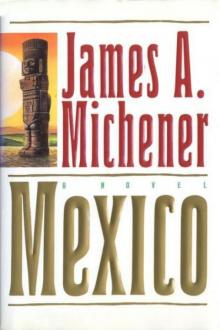 Mexico
Mexico The World Is My Home: A Memoir
The World Is My Home: A Memoir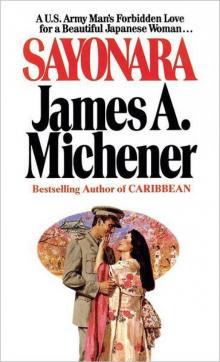 Sayonara
Sayonara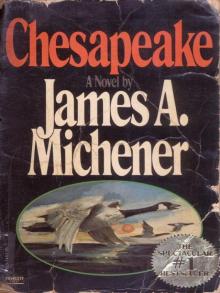 Chesapeake
Chesapeake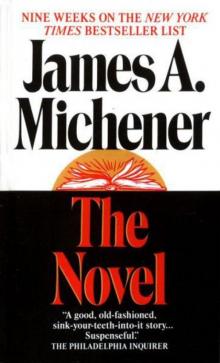 The Novel
The Novel Rascals in Paradise
Rascals in Paradise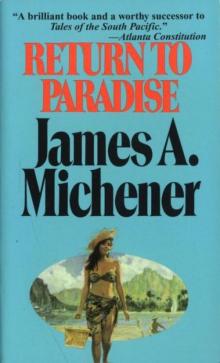 Return to Paradise
Return to Paradise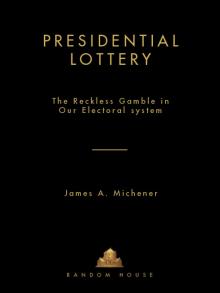 Presidential Lottery: The Reckless Gamble in Our Electoral System
Presidential Lottery: The Reckless Gamble in Our Electoral System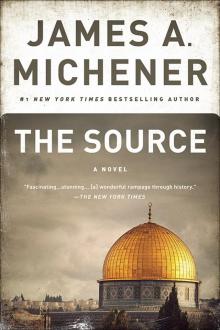 The Source
The Source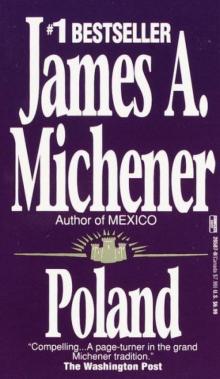 Poland
Poland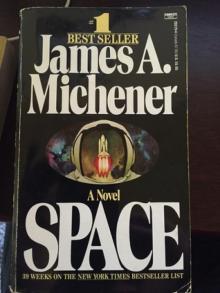 Space
Space Caravans
Caravans Creatures of the Kingdom: Stories of Animals and Nature
Creatures of the Kingdom: Stories of Animals and Nature Iberia
Iberia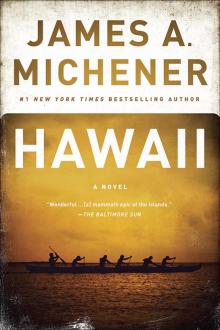 Hawaii
Hawaii The Watermen: Selections From Chesapeake
The Watermen: Selections From Chesapeake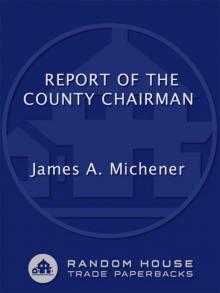 Report of the County Chairman
Report of the County Chairman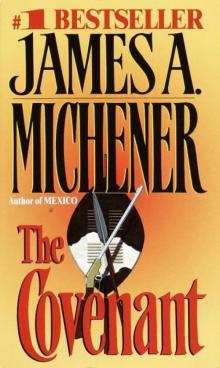 The Covenant
The Covenant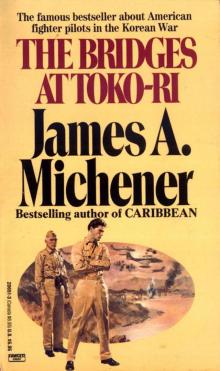 The Bridges at Toko-ri
The Bridges at Toko-ri Matecumbe
Matecumbe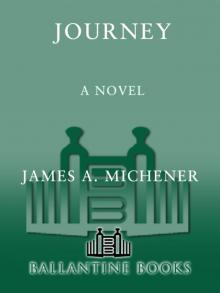 Journey: A Novel
Journey: A Novel Centennial
Centennial Sports in America
Sports in America Texas
Texas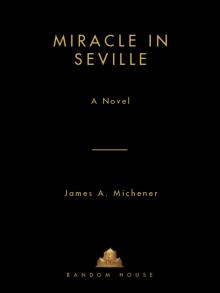 Miracle in Seville
Miracle in Seville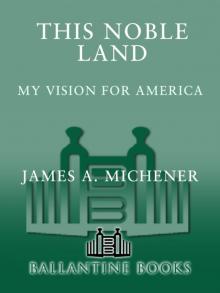 This Noble Land: My Vision for America
This Noble Land: My Vision for America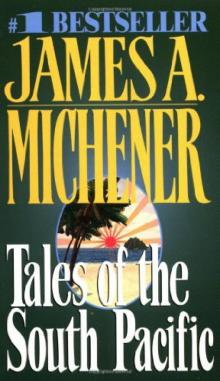 Tales of the South Pacific
Tales of the South Pacific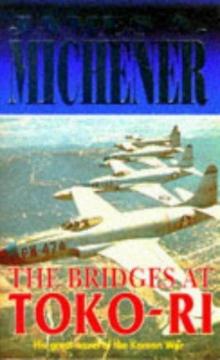 Bridges at Toko-Ri
Bridges at Toko-Ri Space: A Novel
Space: A Novel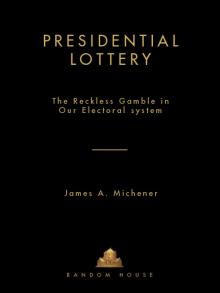 Presidential Lottery
Presidential Lottery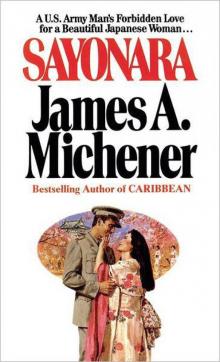 Sayonara: A Novel
Sayonara: A Novel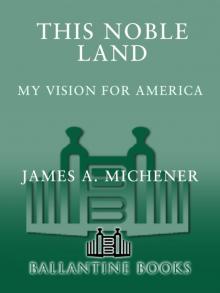 This Noble Land
This Noble Land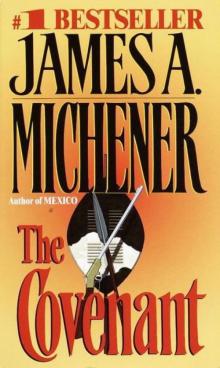 The Covenant: A Novel
The Covenant: A Novel Miracle in Seville: A Novel
Miracle in Seville: A Novel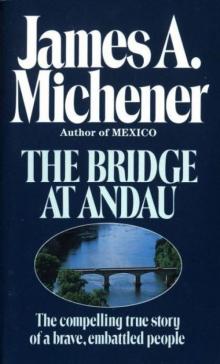 The Bridge at Andau
The Bridge at Andau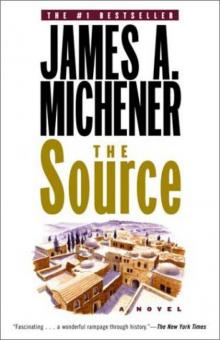 Source
Source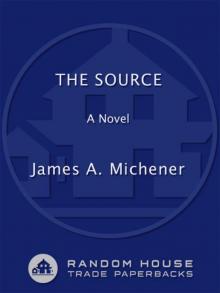 The Source: A Novel
The Source: A Novel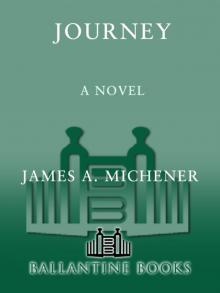 Journey
Journey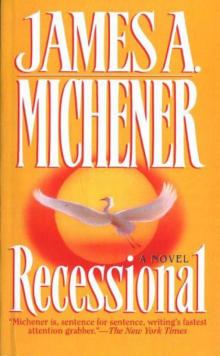 Recessional: A Novel
Recessional: A Novel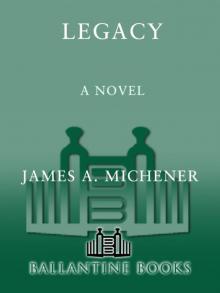 Legacy: A Novel
Legacy: A Novel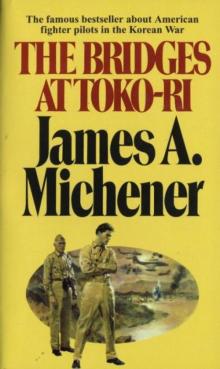 The Bridges at Toko-Ri: A Novel
The Bridges at Toko-Ri: A Novel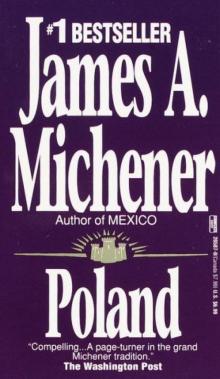 Poland: A Novel
Poland: A Novel